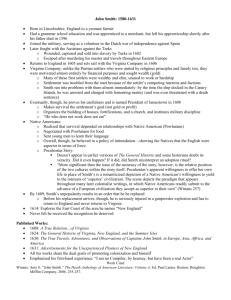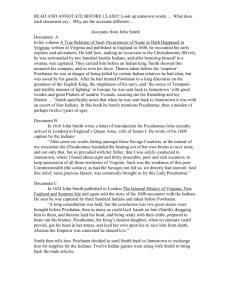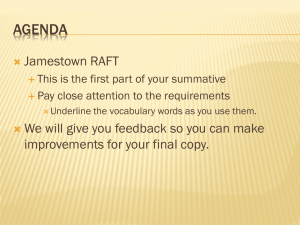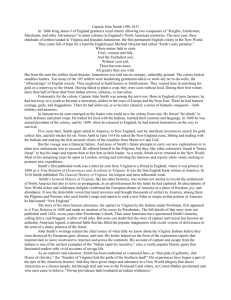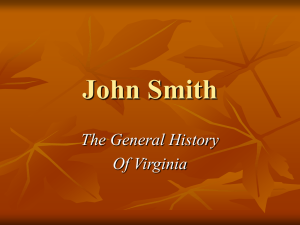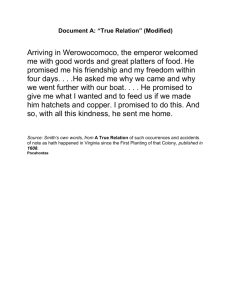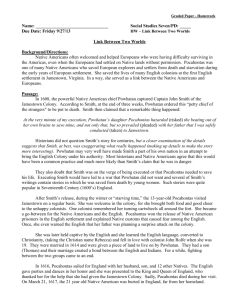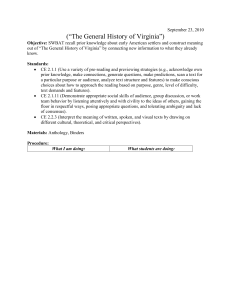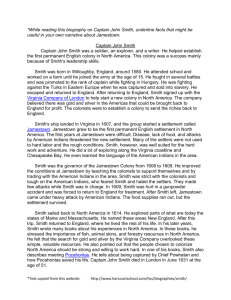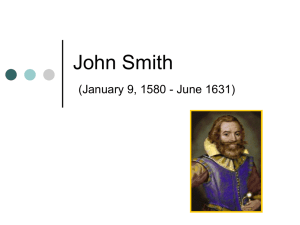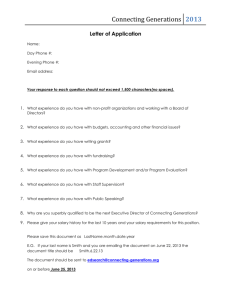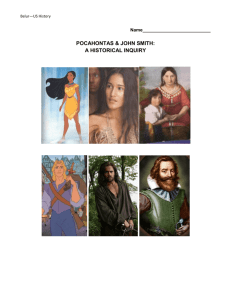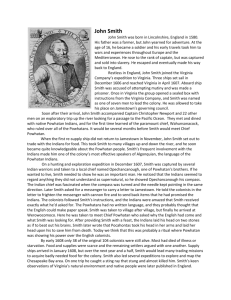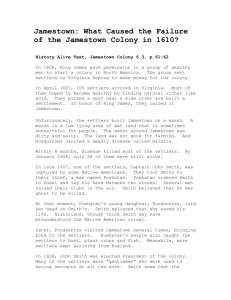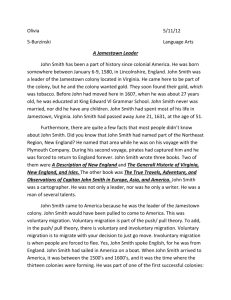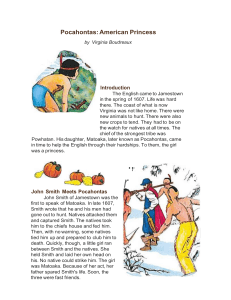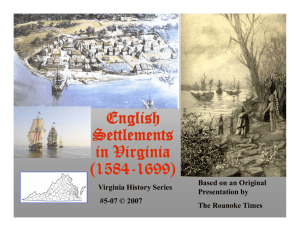Guide to Lecture 3 (Captain John Smith & Jamestown)
advertisement
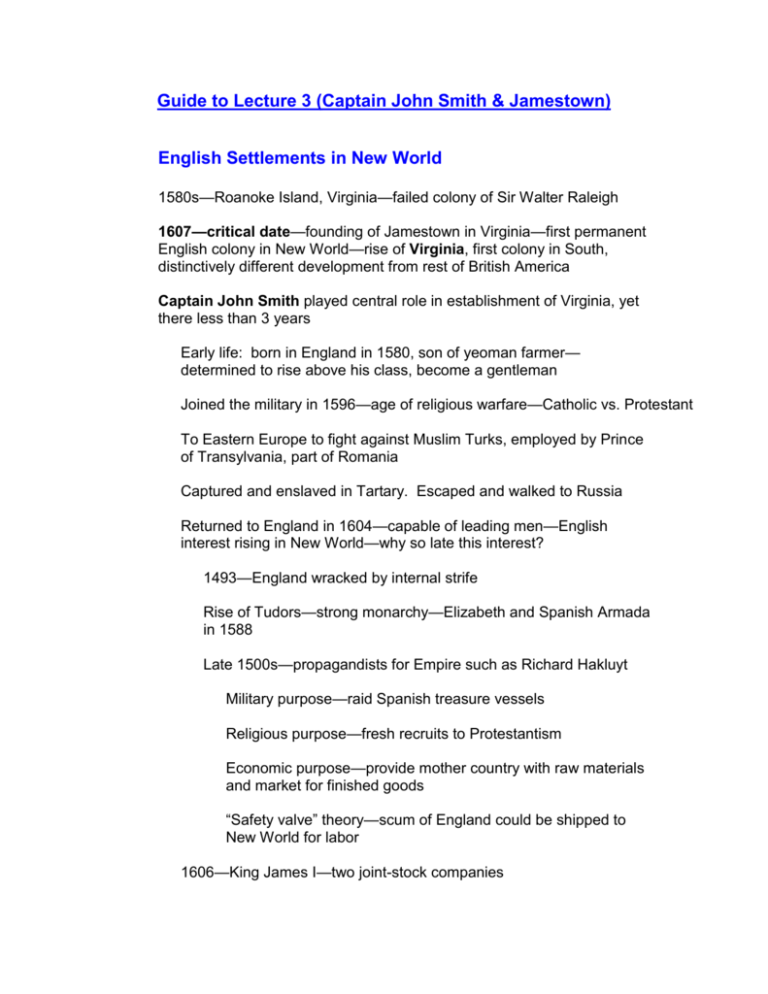
Guide to Lecture 3 (Captain John Smith & Jamestown) English Settlements in New World 1580s—Roanoke Island, Virginia—failed colony of Sir Walter Raleigh 1607—critical date—founding of Jamestown in Virginia—first permanent English colony in New World—rise of Virginia, first colony in South, distinctively different development from rest of British America Captain John Smith played central role in establishment of Virginia, yet there less than 3 years Early life: born in England in 1580, son of yeoman farmer— determined to rise above his class, become a gentleman Joined the military in 1596—age of religious warfare—Catholic vs. Protestant To Eastern Europe to fight against Muslim Turks, employed by Prince of Transylvania, part of Romania Captured and enslaved in Tartary. Escaped and walked to Russia Returned to England in 1604—capable of leading men—English interest rising in New World—why so late this interest? 1493—England wracked by internal strife Rise of Tudors—strong monarchy—Elizabeth and Spanish Armada in 1588 Late 1500s—propagandists for Empire such as Richard Hakluyt Military purpose—raid Spanish treasure vessels Religious purpose—fresh recruits to Protestantism Economic purpose—provide mother country with raw materials and market for finished goods “Safety valve” theory—scum of England could be shipped to New World for labor 1606—King James I—two joint-stock companies Virginia Company of Plymouth (Plymouth Co.)—northern half of Atlantic coast Virginia Company of London—southern half Expectation—quick killing—precious minerals as in south—profit motive—fundamental difference between Virginia and New England Smith and 150 men sailed in late 1606, toward Chesapeake Bay, arriving 06 May 1607 Smith and 104 settlers—peninsula 35-40 miles up James River-Jamestown Ideal for defense Badly situated in other respects—swampy (malaria), ocean tides (brackish water, wastes never flushed)—dysentery and salt poisoning January, 1608—ships returned with provisions—38 still alive Indian Relations Mutual suspicion—some trade December 1607—Smith and exploring party—Northwest Passage Attacked, all killed but Smith Powhatan—powerful Indian chief—Powhatan’s Confederacy Pocahontas, his daughter—saved life of Smith, per his account John Smith as Leader September 1608—elected to lead Jamestown—dictatorial Greatest concern—unwillingness of English to do labor. Why this aversion? Social composition—too many gentlemen Physical shape of settlers Communal organization—no incentive Image of the New World—myths and tales—hard labor not imperative No work, no eat policy Work gangs—in fields 6 hours a day Smith held keys to storehouse Laggards eventually to be banned from fort—certain death Only a handful died under his leadership August 1609—Company officials arrived, removed Smith—wounded in gunpowder explosion—sabotage? October 1609—back to England to recover May 1610—of 500 left behind in colony, only 60 still alive—Starving Time Smith never returned to Virginia, though in 1614 visited “Northern Virginia” for Plymouth Company. Named it New England Wrote and published book about this voyage—encouraged colonization— Pilgrims in Holland—New England ideal site for their religious settlement Pocahantas, John Smith and John Rolfe John Smith and Pocahontas—mutual fascination, probably no affair 1610—John Rolfe arrived in Jamestown via Bermuda 1613—Pocahontas abducted by colonists for ransom, married John Rolfe Introduction of West Indian tobacco into Virginia—extremely important development 1615—Rolfe and Pocahontas to England with son Thomas Smith met Pocahontas once during her stay Pocahontas died in England of disease in 1617 Smith died in bed in 1631 Effects of Jamestown on Indian Nation Managing the landscape Fencing Crops Livestock Disease, especially malaria
